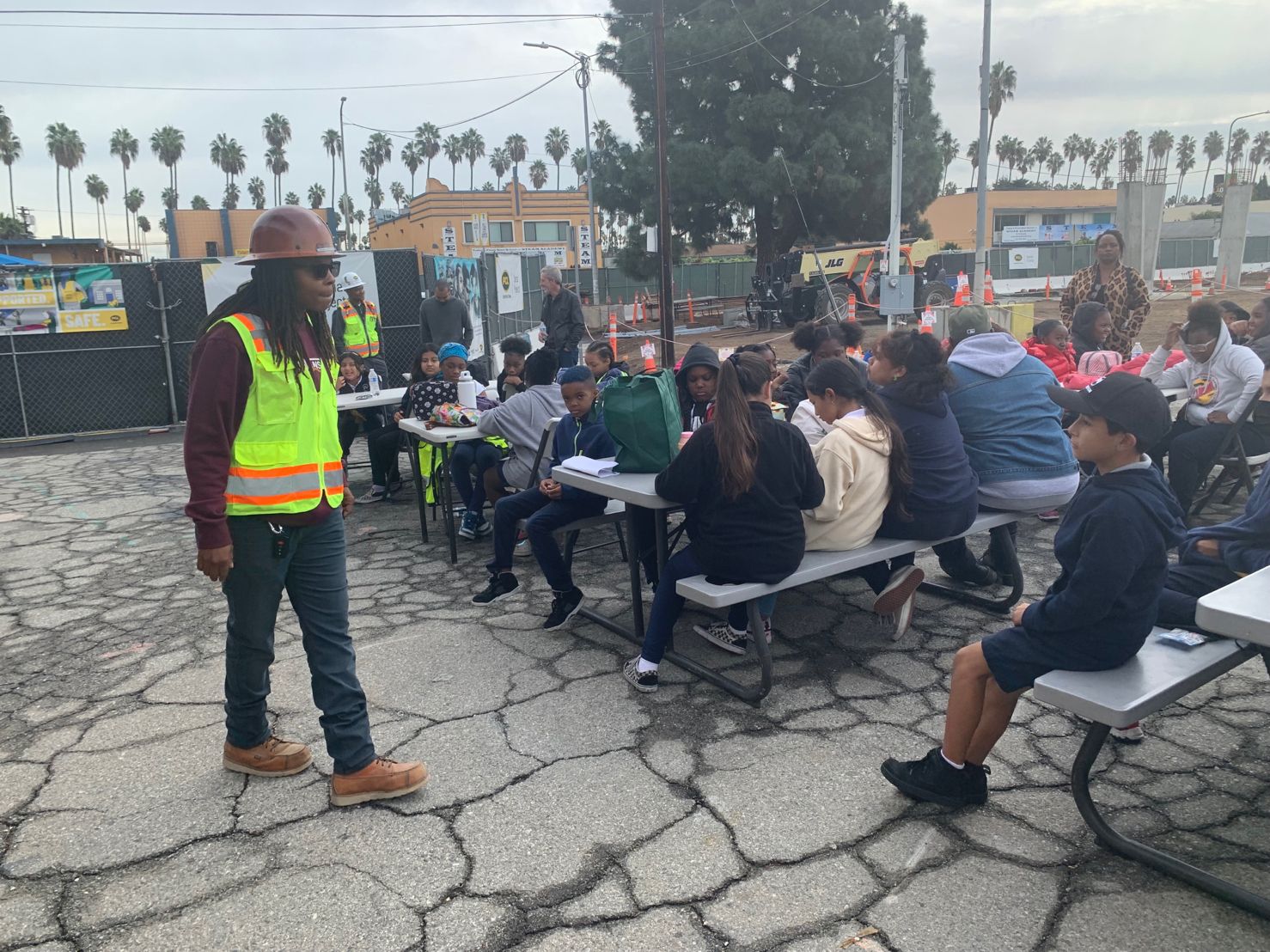|
|
The initialisms of equity
11/08/2022
Government itself offers a number of implements to assist those who do business with the public sector. Along with the more typical outreach devices as vendor fairs and “Meet the Primes” mixers, there are creative approaches by agencies utilizing town hall meetings and presentations via contractor associations to announce contracting opportunities. For the small and disadvantaged business communities, knowing these outlets can represent a lifeline in times of economic uncertainty and offer paddles to push company capacity. Many of the other tools at hand read as an alphabet soup: DBE, MBE, WBE, SBE, LBE, DVBE, OBE, etc. Each of them confers a specific competitive boost to the holder. Additionally, each of them has distinctive characteristics one should consider prior to applying. Jacqueline Pruitt is president and CEO of Marvella Steel Placers, a certified SBE, DBE, MBE, WBE, LBE, CBE & LGBTBE rebar installation company. She is also a director of the National Association of Minority Contractors of Southern California (www.namcsc.org). “Most of the certifications are useful,” she stated in an interview recently. “The DBE and CBE (Los Angeles County’s Community Business Enterprise certification) have provided the biggest jobs for me, but all of them have been useful, even if not as large (in dollars).” Pruitt added, “The MBE and WBE got my favorite job for me, Destination Crenshaw.” We will consider a few of them in this article. This discussion is not intended to be exhaustive. DBE (Disadvantaged Business Enterprise) bears its primary utility from federal agencies and those public entities that use federal dollars in executing contracts. Typically, transit properties and housing authorities are federal grantees – San Francisco, California-based Bay Area Rapid Transit (BART) and the Atlanta, Georgia-based Metropolitan Atlanta Rapid Transit Authority (MARTA), for example. As such, they use federal dollars (in the form of grants) for much of their construction, supply and professional services contract awards. It is worth noting, too, that a number of state agencies require DBE participation in their contracting processes absent a specific federal funding mandate. Qualifying as a DBE can be an onerous prospect. Fortunately, California has an effective unified certification process that streamlines greatly the application effort. The unified certification process nearly guarantees reciprocity, which provides access to a broad canvas of opportunities. In times past, getting certified with one agency was no assurance that a neighboring agency would recognize that certification. Some vendors and contractors, desiring access to multiple contracting opportunities, were required to engage the rather involved DBE application procedure with each certifying agency independently. To be valid and accepted by the federal government for funding purposes, "DBE programs must prove disparate utilization of economically or socially disadvantaged firms," according to Raymond Lee, in a conversation we had when he was the DBE Officer for the San Carlos, Calif.-based San Mateo County Transit District. The evaluative mechanism, called a disparity or predicate study, seeks to establish quantitatively the underutilization of qualified and available DBEs within a region. DBE programs are distinct from the sterile size standards imposed on Small Business Administration (SBA) 8-A program participants. Some argue that the SBA 8-A size standards are more objective, definable, defensible and race- and gender-neutral than the best DBE program constructions. Size standards are based solely on a firm’s average income over three years. As to the average income basis of the SBA 8-A size standards, see https://www.sba.gov/federal-contracting/contracting-guide/size-standards , which offers “This is the “total income” (or “gross income”) plus the “cost of goods sold.” These numbers can normally be found on the business’s IRS tax return forms. Receipts are averaged over a business’s latest three complete fiscal years or (except in the Business Loan and Disaster Loan Programs) five complete fiscal years to determine the average annual receipts. If a business hasn’t been in business for five years, multiply its average weekly revenue by 52 to determine its average annual receipts.” Back to DBE certification: In the absence of an approved DBE program, that is, one operating within the authority of an accepted predicate study, agencies may encourage DBE utilization but may not set mandatory goals. Some agencies skirt this by setting voluntary goals and buttressing the effort by asking contractors and vendors to assist the agency in growing and grooming small, economically, and socially disadvantaged firms. MBEs (Minority Business Enterprises) and WBEs (Women-owned Business Enterprises) are much less prominent in many states (and MBE programs are almost completely dismantled in California with the passage of the anti-affirmative action prohibitions attendant to its Proposition 209 in 1996). Just the same, some agencies still manage a modified and carefully constructed iteration of this leveling-the-playing-field arrangement. The County of Los Angeles is one such agency. A typical MBE or WBE program encourages prime contractors and vendors to utilize MBE/WBE firms without setting or sometimes even mentioning goals. Another creative entry is the LBE (Local Business Enterprise). This arrangement varies greatly by agency but can be a real advantage to companies based in jurisdictions that have an LBE in place (the City and County of San Francisco and Los Angeles County offer widely heralded and expansive LBEs, e.g.). The typical LBE boasts impressive justifications. In contrast to its absence, "an effective LBE encourages a higher level of participation for small, developing businesses," according to Bayard Fong, a now-retired contract compliance officer with the San Francisco Human Rights Commission. Fong added, "(the LBE program) encourages revolving economics," a circular model of financial reinvestment within a locality. LBEs may also improve the tax base by requiring local hiring practices, which assists the employment sector and girders community economic health, as well. Fong explained it this way: "Local businesses inherently employ local people. Non-LBE firms...often will want to bring in their own crew. Local entities can pass LBE legislation to make this (hiring of local workers) required." Margaret White, founder, president and CEO of Los Angeles Housing Compliance, Inc. (https://www.lahousingcompliance.com/ ), is a consultant to contractors and government agencies throughout California. She is an expert on government services supporting small, women, and minority contractors and vendors. We asked her about U.S. HUD’s Section 3 Program (see the HUD Opportunity Portal to register or locate a Section 3 business at https://hudapps.hud.gov/OpportunityPortal/ ). White wrote, “Section 3 is an excellent federal program that promotes inclusion in contracting and also hiring on federally funded housing construction projects. Section 3 by definition includes individuals that make below the 80% Annual Median Income or have within a certain period determined by the project funding, Youthbuild (Youthbuild.org) participants, employees of a Section 3 business, or public housing residents. Targeted Section 3 includes individuals that live within the Service Area (typically within 1 mile of the project), employees of a Section 3 business, Youthbuild participants or public housing residents.” White continued, “On November 30, 2020, The US Department of Housing and Urban Development (HUD) rolled out their Section 3 Final Rule which requires now that 25% of all work hours are worked by Section 3 workers, and 5% of all hours are worked by Targeted Section 3 workers. I find this measure greatly improved from a hiring perspective in that the previous Section 3 rule which required that 30% of new hires were Section 3 and 10% of businesses were to be Section 3. Now we are tracking retention of Section 3 workers through the tracking of hours rather than hired workers count, and the Targeted Section 3 encourages Local Hire. I hope that in future Section 3 updates, we see a specific mandate and percentage goal to hire Section 3 businesses (previously 10%), above the current incentive of counting the workers of a Section 3 Business Concern as Section 3. In our work implementing Section 3 policies in Ventura and Los Angeles Counties, I am encouraged to see public agencies working with prime contractors and project owners to implement the Section 3 Final Rule.” SBE (Small Business Enterprise) programs developed with some strength and urgency during heated discussions in the U.S. Congress during the 1990s that threatened to dissolve federal DBE programs. The SBE programs were designed to mimic the SBA 8-A model, thus ensuring SBE program defensibility. The SBE’s key features included race-neutral qualifying criteria in the form of size standards (gross income) and objective, clearly measurable vetting of personal net worth data. The SBA has the only federal SBE-type program; all other SBE programs are locally or regionally administered and funded. In California, its Department of General Services administers the state’s SBE program. Other SBE programs exist within the state at regional levels, however. This fact can complicate rather than simplify SBE conformity. Part of the problem is that firms certifying with a regional network remain ineligible to claim reciprocity with the state’s SBE program. This renders them unable to participate as an SBE on state procurements unless they certify with the state independently. Many SBE firms regionally or locally certified may be unaware of the distinction. Finding a fit: Firms that desire appending one or more of the many initialisms discussed above stand to benefit in considerable measure provided the program fits the organization. A cottage industry of consultants exists whose stock in trade consists of its familiarity with the various programs and facility in working through hiccoughs in the widely discordant processes. The best of the government agencies goes one better by providing consultant-grade assistance within it, offering one-stop shopping to enterprising vendors and contractors. It is advisable to begin with the regional certifying agency of your choice in seeking answers to questions regarding certification. Knowing the correct questions to ask assists handily in garnering useful answers. A good place to begin is the San Francisco-based Small Business Exchange (www.SBEInc.com); it offers links to state and local business and economic development programs of nearly every description.
Back To News |
|








